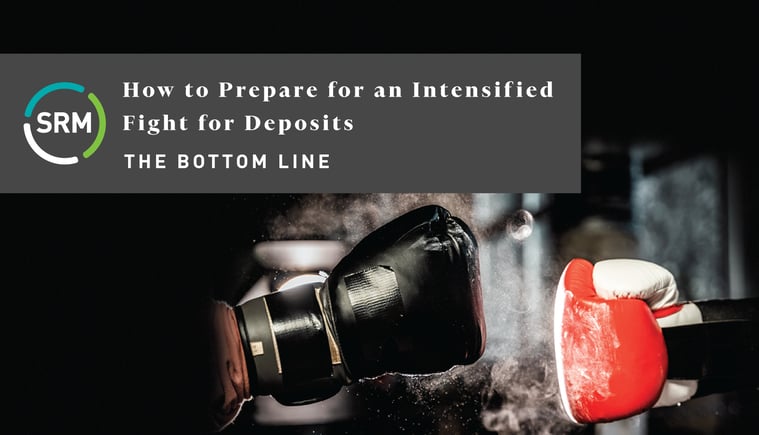
The prolonged period of taking deposit gathering for granted seems to be nearing an end.
Financial institutions have been awash in deposits for years, flush with liquidity. According to data from the Federal Deposit Insurance Corp, deposit balances at banks have risen by 35% in the past two years alone.
The bigger challenge has been finding ways to put those deposits to use in profitable ways.
Everything has a life cycle, and it appears that FIs will soon need to be more competitive in recruiting and retaining depositor relationships. The Wall Street Journal recently noted a growing belief among bank analysts that deposits at the biggest US banks could decline by 6% this year.
Competition is coming from all angles. In addition to banks and credit unions, notable deposit outflows have been linked to cryptocurrency exchanges as more people embrace digital asset investments.
For the first time in two years, bankers are declaring that they're "in the market for CDs." With that in mind, banks and credit unions must prepare for a shift in mindset and take steps to protect their liquidity.
This Time *Might* Be Different
With the economy entering its third rising rate cycle in the last 20 years, we can look to recent history for clues to the road ahead. However, several twists in the landscape make the crystal ball blurry. Rarely have FIs begun a cycle so well-funded, which may portend a delay in heightened deposit competition. At the same time, banks and credit unions are holding onto more mortgages – fueling a greater appetite for deposits.
There's a unique commercial lending component to this turn in the cycle. Demand for traditional business loans has mainly been subdued – primarily reflecting the success of the Paycheck Protection Program (PPP). It's a matter of time before appetite for these loans returns, putting more pressure on FIs to hold onto their deposits.
Not every FI will find itself presented with the same challenges. Markets are different, and it only takes one or two competitors promoting aggressive rates to reset consumer expectations and start a deposit battle.
The ascent of digital banking is another element. Depositors are less likely to see a rate card at the branch or speak with a banker before moving their funds – making silent attrition a much greater risk. As stated earlier, large sums are quietly leaving FIs to go to crypto exchanges.
The Client in the Balance
Banks and credit unions shouldn't solely monitor their loan-to-deposit ratios to assess their liquidity position – each deposit account has a client attached to it. Even if an FI doesn't currently need the funds, is it willing to jeopardize the associated relationship? Any institution taking on deposits is sure to follow up with a checking account offer to secure primary FI status.
This points to the "sleeper risk" conundrum bankers perpetually encounter. There's great temptation to pursue "new money," enticing non-customers with attractive offers when courting deposits. The irony is that these funds cost more than the rate bump required to convince an existing customer or member to stay (while at the same time, current customers are receiving similar higher offers from competitors).
Although many banks live in fear of sleeper risk, the reality is that true sleepers stay asleep. If an FI's marketing strategy woke them up, chances are good a similar effort by a competitor would have done so anyway.
FIs can tackle deposit gathering with an approach akin to what we propose for finding overlooked lending opportunities within an existing client base. It is incumbent on the institution to proactively initiate conversations that make it easier for customers to self-identify as being "in-market" when it is right for them.
The Bottom Line
In the short run, most banks and credit unions can afford a little runoff of deposits – some might even welcome it. However, the rules of engagement can change rapidly, much as they have with inflation, and FIs certainly don't want to lose client relationships in the process.
While it is essential to attract a prospective depositor's attention while they're in the market, building familiarity through prior exposure also has value. The key is to be proactive and holistic in setting a deposit strategy – and hoping depositors don't wake up as rates rise is not a strategy. SRM has the tools and know-how to help you build such a strategy and effectively execute it to keep liquidity levels robust enough to support future lending opportunities.


